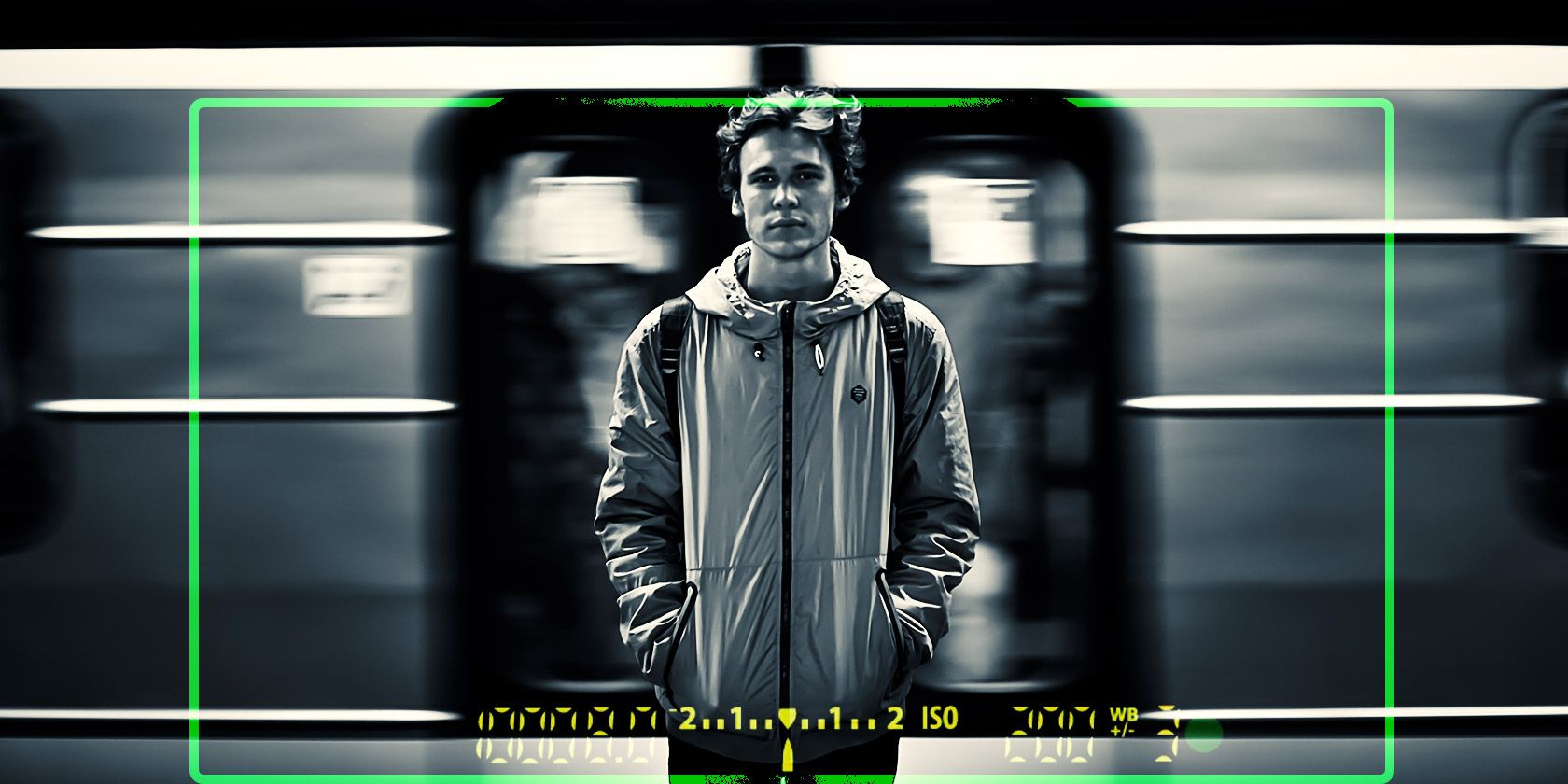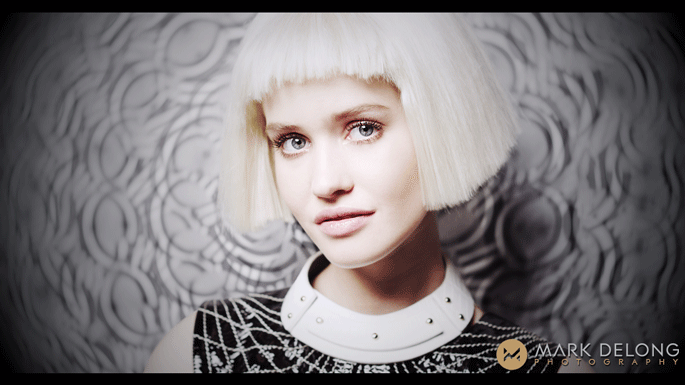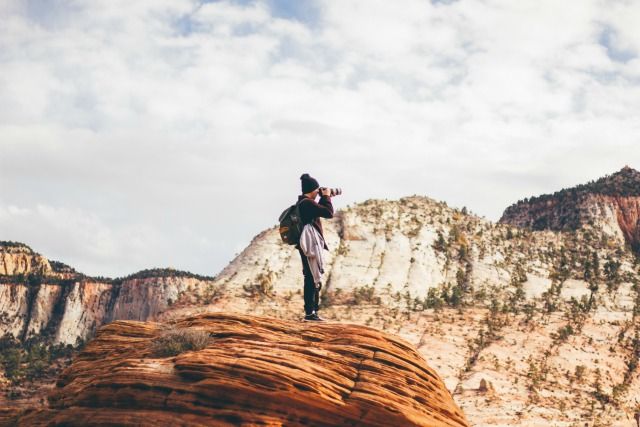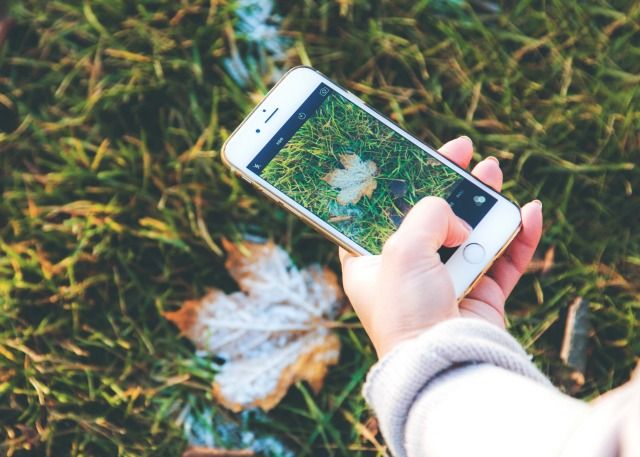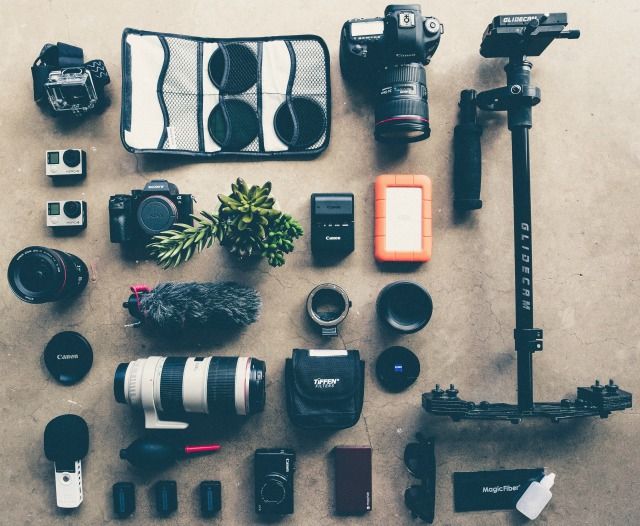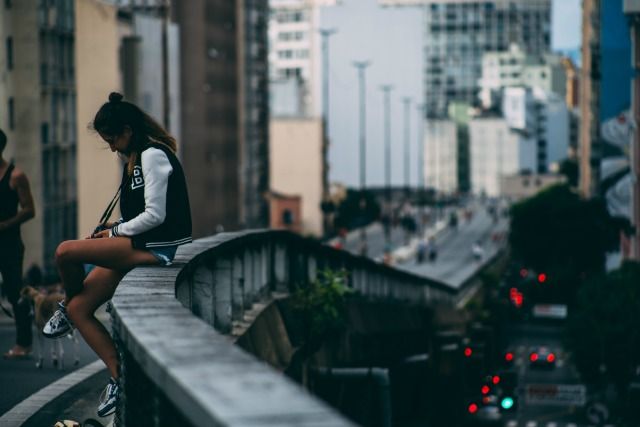If you've never heard of motionography, don't worry - it's a relatively new term. It involves taking a still image and animating certain components to bring the final piece to life.
A great example of motionography in action is this work called "Hypnotic Robotic" from photographer Mark DeLong.
The first known photographer to use the term "motionography" to describe his work, DeLong is considered by some to be the founder of this niche.
Take a close look and you'll notice the model in the foreground is completely still – and in focus – while the background rotates. This particular image certainly creates a hypnotic effect.
Motionography vs Cinemagraphy - What's the Difference?
Cinemagraphy and motionography may seem almost identical, but they aren't. Cinemagraphs are photos that feature minor, animated elements while a majority of the image remains still. For example, you might see the photo of a barbershop storefront, with only the barber sign twirling.
Have a look at a few examples of cinemagraph to understand what I mean.
Regardless, the visual differences are still subtle - it's the method of creation that really sets them apart. DeLong explains:
"The layering process is different in motionography than a cinemagraph, because the base image is a still image that is captured with a still camera. A cinemagraph is a motion image that has been frozen into a still except for a selected area."
In a cinemagraph, because you are turning a video into a still, a large part of the content needs to remain still throughout the initial shot. Motionography encourages a different sort of creativity.
"For motionography, I usually look for an image that, as a still, is already a great image. From that point, I try to figure out what I could do to the image to create even more interest. This could be moving layers of the image around, shooting and adding a video component, adding colors that move on the image, but it could really go on and on, as we are taking a two-dimensional image and adding the variable of time to it. This brings the photograph to life."
As you can see, motionography is more about bringing an image to life, through animation, whereas cinemagraphy is about capturing a still of the moving world.
How Motionography Can Inspire You as a Creative
With every new art form comes a wave of lessons and inspiration for creative types. Motionography is definitely no exception to that rule, and there's a lot you can learn from it.
It Gets You to Consider How Movement Enhances Your Images
For starters, motionography inspires photographers and designers to look at the beauty of motion. More specifically, it forces you as an artist to consider how movement will enhance or affect a particular image.
Will the spinning background create a hypnotic effect, forcing you to look directly into the model's eyes? Will a flowing river direct your eyes to the edge of a photo where a loving couple embraces? Will a moving component simply steal the show?
The beauty of motionography is that you are taking a still image – a snapshot of a particular moment in time – and bringing it back to life. You are returning to that moment or experience and reviving a certain feeling or emotion it may have evoked.
It Teaches You to View Your Work as an Experience
Check out this other work from DeLong called "The Great Outdoors". Almost every element of that header image is still, except the sky. However, when you look at the image, it evokes a variety of emotions and senses about what that very day was like.
In this sense, motionography can encourage you to view your artistic work as more of an experience, instead of a still piece or an object. The question then becomes: What kind of experience can you create with your imagery? What senses will your image evoke? Will it generate nostalgia or create new feelings entirely?
Design artist Jon Nutting created a similar effect using parallax design techniques to animate an image of two boxers. Move your mouse up in the image space to zoom in, and down to zoom out. Now, there's a lot more going on behind the scenes here than in DeLong's image, but it's the same basic concept.
It offers an experience, one that you wouldn't get with a traditional photo.
It Shows the Benefits of Trying New Things
At the very least, motionography encourages you – as an artist – to branch out and try new things. It does this simply by forcing you to look at your work in a different light.
What kinds of new imagery and experiences will you be able to create? Will you discover a completely new niche that no one has explored before?
With regular photography, you're looking at ways to slow the scenery down and capture a single moment. With motionography, you're looking at ways to turn a single moment into an all-encompassing experience.
In a way, you're doing the opposite of what you'd do in traditional photography.
It Could Grow Your Skillset as a Film or Motion Editor
It hurts to hear, but as a traditional photographer, you may not be used to working with motion as a concept. Sure, you may have experience capturing still images of objects that are in motion, but this is a wholly different practice than working as a film or motion editor.
You can actually add film and motion editing to your resume confidently.
Should You Explore Motionography?
Now that you've had a better opportunity to learn what motionography is and how it can affect your artistic vision and creativity, perhaps it's time to consider exploring the concept further?
One thing it will definitely do is encourage you to look at the world around you in a different way. Rather than trying to capture single frames, you'll spend your time figuring out how to animate those frames. What motion or animation can you add to an image to make it more appealing? How can you make an image come to life? What kind of experience will you create for your viewers?
These are all questions you'll need to answer as you try out something new, fresh and innovative.
-- Images by Mark DeLong Photography, Jakob Owens, Kaique Rocha, Luke Pamer and Maria Shanina.
-- Motionograph "Hypnotic Robotic" by Mark DeLong Photography.

